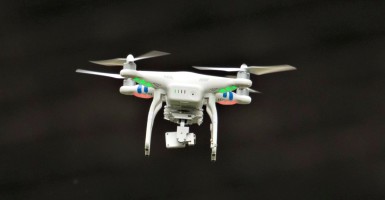North Dakota just legalized police drones to be outfitted with tasers, pepper spray, and other “non-lethal” weaponry.
As the drone debate continues over right to airspace versus right to privacy, the North Dakota bill is the first that moves the devices from a surveillance and reconnaissance tool into a flying weapon, lethal or not.
Privacy issues aside, drones do have many positive benefits.
Remotely piloted aircraft are machines that are particularly good at covering a lot of space in a relatively short amount of time—perfect for finding lost hikers or following suspects on the run. They also are creating interesting innovation within agriculture, increasing yields and reducing crop damage.
Policy makers are also debating the specifics of drone delivery, whereby drones may one day play an even greater role in the delivery of either commercial goods or disaster relief.
But there are times when drone use is clearly inappropriate—such as using a drone near an airport or no-fly zone.
Scholars from The Heritage Foundation have laid out the basic principles for governance for drones in U.S. airspace.
These basic principles apply to an array of domestic drone users, from agricultural to commercial delivery to those working in homeland security. And the most basic of these principles, including those for law enforcement, revolve simply around the allowance of drones for surveillance, reconnaissance, and communication—not as weapons.
Attaching non-lethal weapons to drones may be pushing the limits of excessive force.
Drones are a great tool for many non-lethal activities, but it is unclear that non-lethal weapons attached to drones can be appropriately used. Weaponized drones may be overused to address situations where a police presence would be appropriate.
A drone with a taser or pepper spray may not have the same accuracy as a police person with the same weapon—leading to more people being tased or sprayed than intended. Of course, there are instances when non-lethal weapons like tasers and pepper spray can have lethal consequences. And finally, there always exists the risk of technical malfunction, possibly leading the drone to misfire or fire excessively.
If anything, the utilization of weaponized drones should be reserved for extraordinary situations. Until it is clear there exists the same degree of competence and care for a weaponized drone in the hands of the police compared to simply having an on-the-ground police presence, drone use should stick to surveillance, reconnaissance, and communication.


























